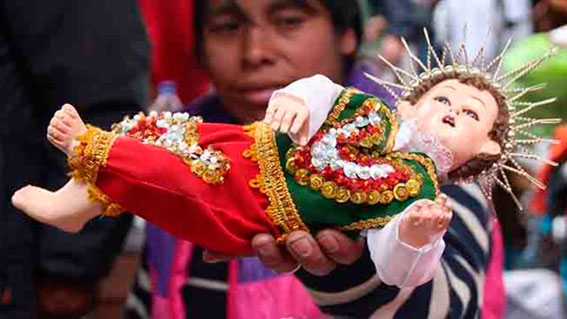Festivals and Holidays in Peru
Peru validly affirms to having a diversity of festivals and traditions that form the cultural heritage of the country. An endless amount of events and festivals throughout the whole year give color and taste to our daily life, with celebrations that, among typical dances and deep acts of religious devotion, fill up Peruvian life with passion and happiness.
Patron Festival of the Patron Saint Sebastian: This festival is in Cusco in the district of San Sebastian, where every year during the days of the 19th to the 26th of January, they carry out processions with diverse traditional dances in Cusco.
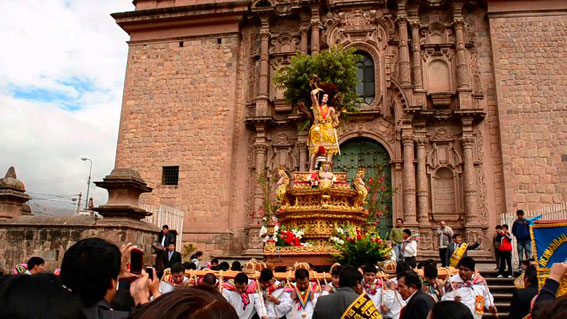
Anniversary of the Foundation of Lima: Takes place on the 28th of this month and commemorates the day the Spanish founded the city. The celebration usually takes place in the historical center of the capital, accompanied by touristic and cultural activities.
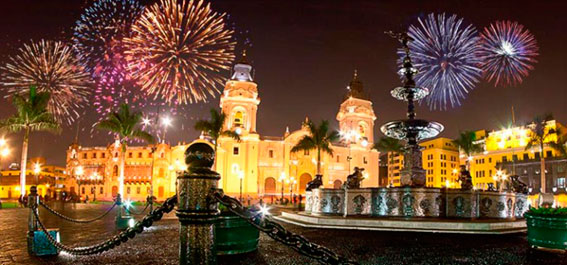
National Festival of the Marinera: This event will take place this year, making it the 53rd National Marinera Competition. This is one of the most elegant couples dances in Peru, in which both dance partners move while hitting a white handkerchief and doing a series of unique dance steps. The man wears a poncho and a hat, while the woman wears beautifully typical clothing from the region.
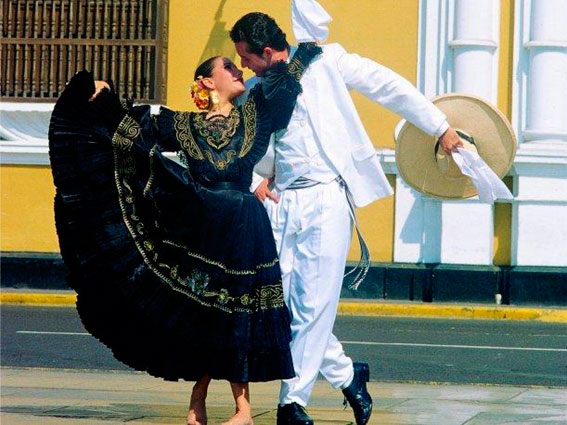
Festival of the Virgin of the Candelaria: It is one of the most important festivals in all of South America. The most important day is on the 2nd of February, when the Virgin of the Candelaria leaves the church to go round and round the streets. It is a big mix of dances. The festival lasts the whole month.
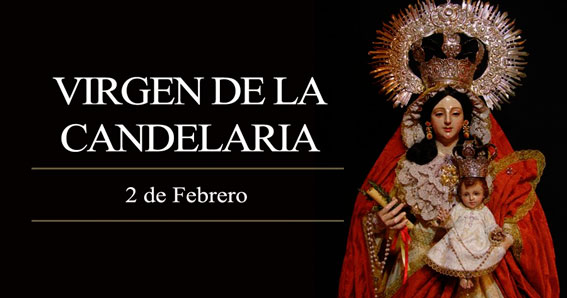
Carnivals: From the second half of the month, the carnival is celebrated in different parts of the country. There is almost one month of festivities, with colors, music, and traditions carried out in all of Peru. Some of the most important carnivals are the ones in Cajamarca, Puno, Juliaca, Cusco, Urubamba, Ayacucho, Abancay, Tacna and in Iquitos.

Señor de la Buena Muerte de Chocán: This celebration takes place in Piura, Sullana, and Querecotillo, the 2nd of February of each year. During the celebration, they worship and make a procession carrying the image of a crucified Christ carved out of wood, which is a ritual that started during the times of Francisco Pizarro.
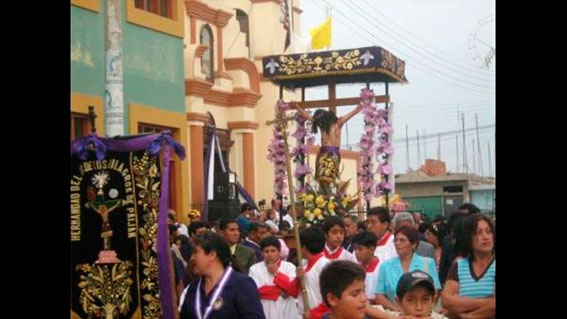
International Festival of the Harvest of Ica: Begins on the first weekend of the month and ends with the celebration of the harvest of grapes. The programs of the activities of the festival include competitions of wines and piscos, and the presentation of local and international artists. Color and flavor in a same place.
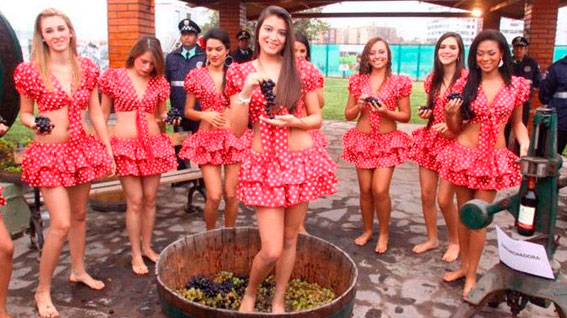
Señor de los Temblores: The festival takes place in Cusco between the second two weeks of March and the second of April. Here they celebrate the Lord of Miracles or “Señor de los Temblores”, as well as the carmesi flower.
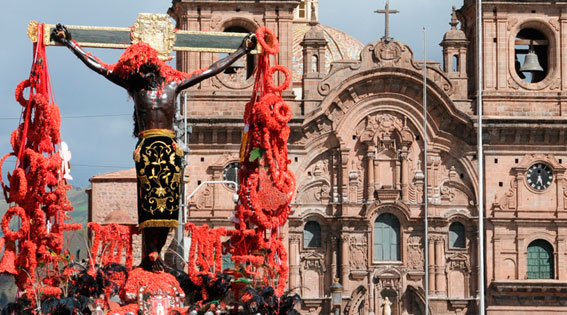
Holy Week: The date is established by the liturgical calendar and the festivities take place throughout the whole country. The most interesting here is the appreciation of the religious syncretism. Some of the sites where it is worth to spend the Holy Week are in: Ayacucho, Cusco, Arequipa, Cajamarca, Piura, and in Tarma.

National Horse Riding Competition: The Peruvian Paso horse is an equine breed from Peru that descended from the horses that were introduced by the Spaniards during the Conquest and during the first periods of colonial rule. By the means of a resolution from the Ministry of the Exterior and Tourism Commerce, the Peruvian government made the day of this festival the third Sunday in April each year. So, on this day they put into place the National Competition of Peruvian Paso Horses.
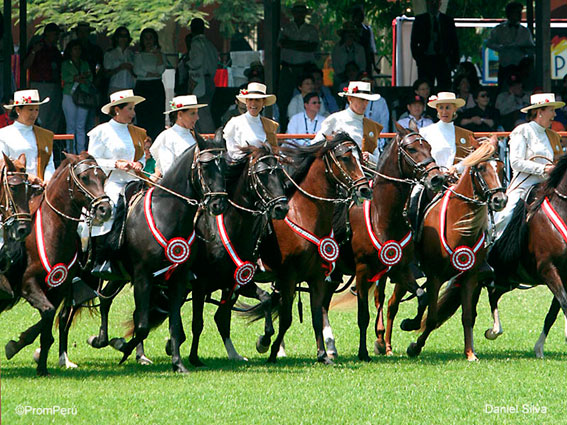
Señor de Muruhuay: The Señor de Muruhuay is an image of Christ being crucified, painted on a rock located in the district of Acobamba, Tarma. During this month, they have celebrations here in which the parishioners do typical dances and then enjoy traditional foods. The main day is on the 3rd of May, during which a mass takes place conducted in the Quechua language. After this, the faithful bring a letter to God to plead and thank him.
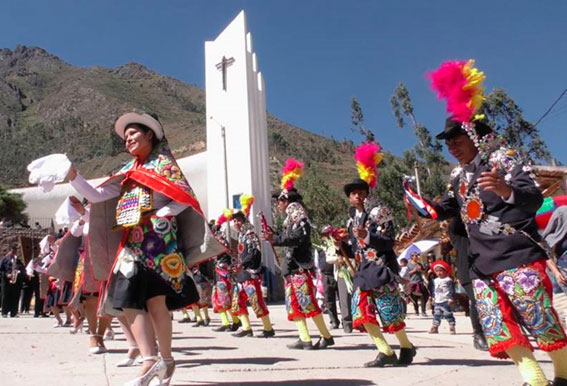
Virgen de Chapi: Also known as the Virgin of the Purification: During this celebration, they make a pilgrimage going through the desert of Arequipa. Along the way, the faithful carry rocks to later form different cairns. These small mountains made of these rocks represent their sins. The festival also includes artificial fires, music, and typical foods. The main day of this festival is on the 1st of May.
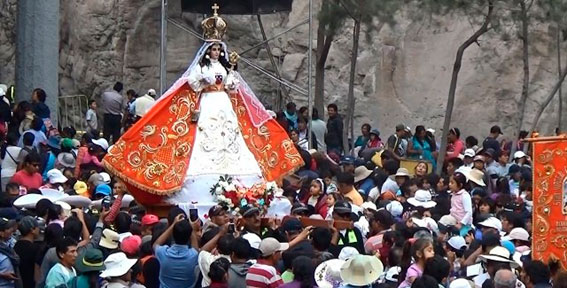
Fiesta Jubilar of Cusco: Celebrations in the great Imperial city are carried out during the whole month of June, where every day incredible traditional activities are done in the city, such as the competition of traditional dances.
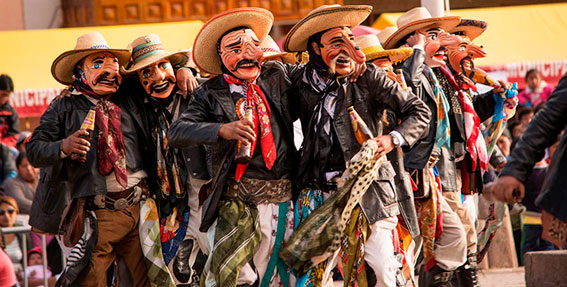
Inti Raymi: This is the traditional festival of the Sun, in which the Incas worshipped. The festival also coincides with the winter solstice and the harvests. The celebration begins with a dramatization in the Qoricancha temple and the festivities continue at the fortress of Sacsayhuaman. It takes place in Cusco on the 24th of June and is an experience that is well worth witnessing.
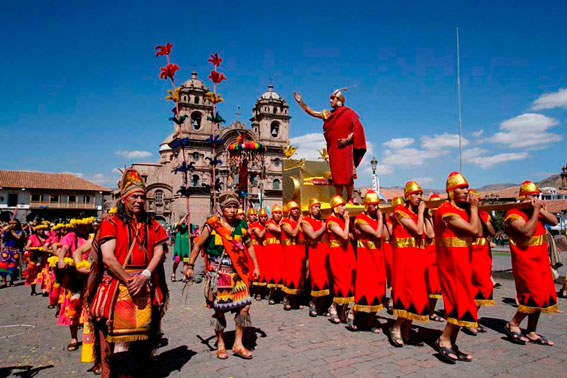
Qoyllur Rit’i: Qoyllur Rit’i takes place in Cusco between May and June. It is the largest pilgrimage of indigenous nations on the continent. It’s here that more than 10 thousand people walk on foot to the Ausangate Mountain, worshipping a painting of the Niño Jesus. A group of people climbs to the top of the peak to look for the Star of the Snow (Qoyllur Rit’i). They come back later with blocks of ice used to irrigate their lands with the sacred water.
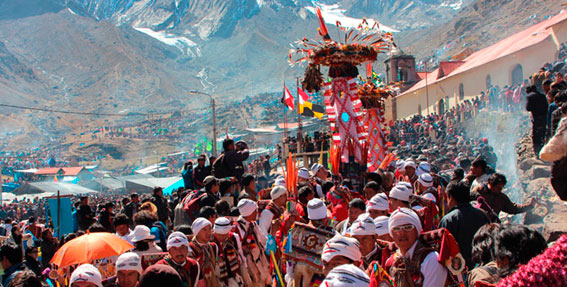
Corpus Christi: In accordance with the liturgical calendar, people celebrate this festival in May or June. Without a doubt, this is the most important celebration of Corpus Christi in Peru. It takes place in Cusco with impressive processions, festivals, typical dishes and a lot of color.
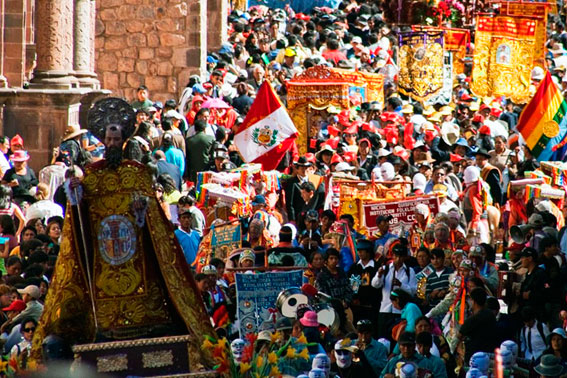
Festival of San Juan: This is one of the most important popular festivals in the Amazon. During the festival, the people symbolize the renewal of the faith in between a statue of San Juan Bautista and the power of the water. The celebration includes music, fairs, handicrafts, local cuisine, typical dances, and of course, the presence of water at all times. The most important celebrations of the Festival of San Juan take place in Iquitos, Moyobamba, Tingo Maria, and Ucayali.

Fiestas Patrias: The 28th of July is Independence Day in Peru. The country celebrates this day with a variety of celebrations. The celebration includes music, food, fairs, masses, and cannon shots that commemorate the beginning of a very special day.
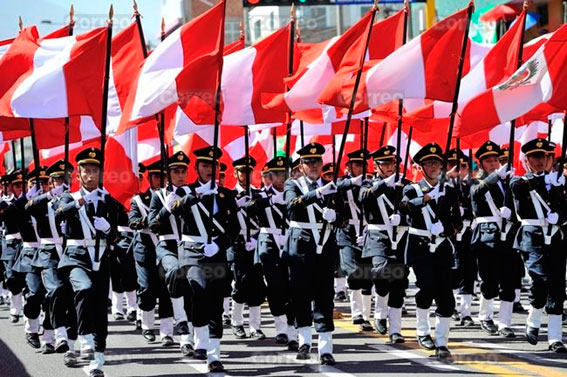
Santa Rosa de Lima: The 30th of August is the day they celebrate the day of the Patron Saint of the Americas and of the Philippines. In this way, the faithful visit her sanctuary and the shrine that she herself constructed. One tradition is when the pilgrims throw out letters with requests to the well where the Saint threw away the key to the belt of her cilice.
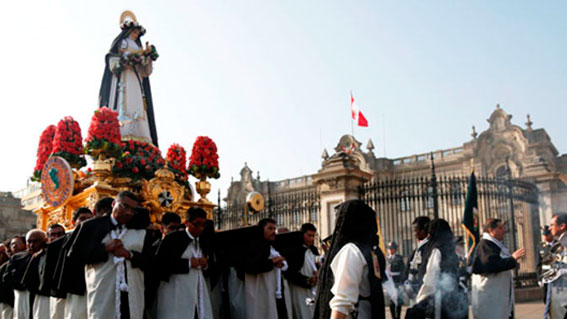
Señor de Huanca: It is celebrated in Cusco, in the district of San Salvador, where thousands of parishioners from all over Peru and other countries come to worship the Holy Image every 14th of September, which is the main day of the celebration.

Virgen Natividad Real de la Almudena: Every 8th of September, there is a large celebration of the Virgen Natividad in the city of Cusco. It is a week filled with festivals where the Holy Image is carried around the Cusquenian streets to bless their parishioners.
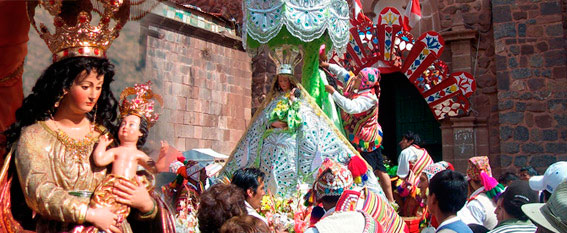
Summoning and Re-enactment of the Fiesta Inca de Warachicuy: It takes place on the third Sunday in September every year in Cusco, more precisely along the esplanade of Sacsayhuaman. It is a traditional Inca experience-based festival where they present the traditional art of the Inca culture.
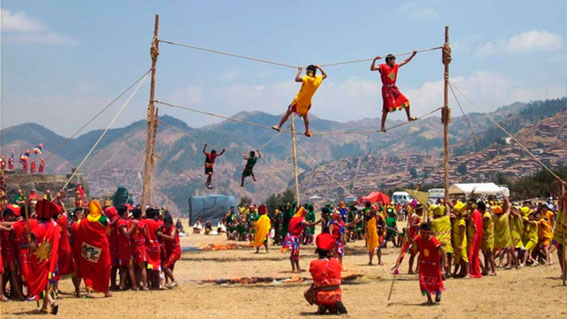
International Festival of spring: It is celebrated in the city of Trujillo, with the purpose of this festival to decorate yourself full of colors. On the main day of the event, you can get to see a parade of allegorical cars, headed by the Queen of Spring.

Señor de los Milagros: During the whole month of October, the faithful celebrate Cristo Moreno or the “Lord of Miracles”, but on the main day, they take part in a procession in which the faithful are dressed with purple tunics, singing and praying, accompanied by the image of the Señor de los Milagros.
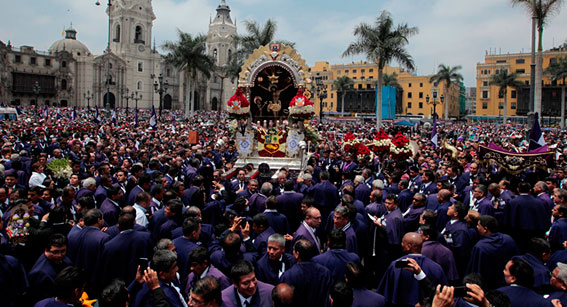
Day of All Saints and Day of the Deceased: They celebrate this day on the 1st and 2nd of November, respectively, which is a festivity that takes place throughout the whole country. The celebration stands out more in the regions of Cusco, Puno, Arequipa, Cajamarca, and Piura. In these places you can see, better than in any other parts of the country, the mix of Christian and indigenous beliefs.
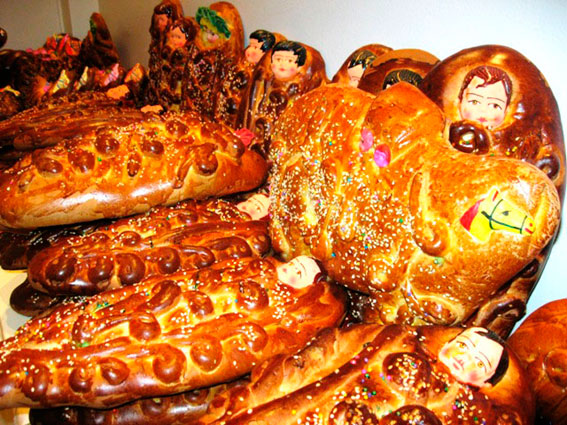
Santuranticuy: This celebration takes place every 24th of December in the main square in Cusco. This fair of popular art is where a large number of handicraftsmen lay out their blankets and offers their works at very good prices.
